In this article we would like to introduce Higashiyama・Gion Area.
Yasaka Shrine 八坂神社
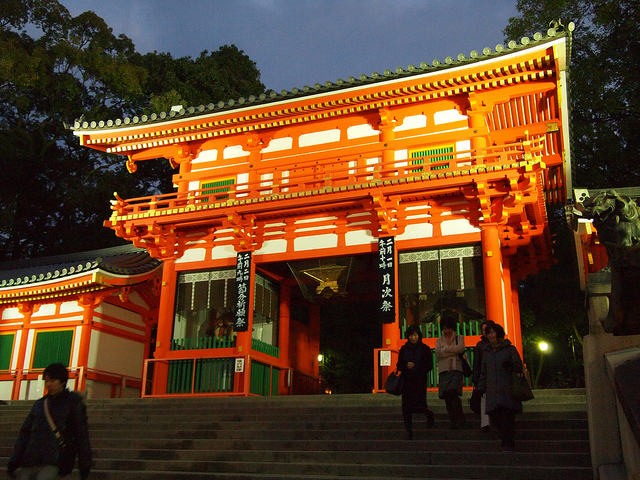
The Yasaka-jinja Shrine is Japan’s principal Gion Shrine. It is also famous for the Gion-Matsuri Festival, one of the three most famous festivals in Japan. Praying at the shrine is thought to bring protection from misfortune and ensure good health. Although the shrine is said to have been established in 656, the current name has only been used since the Meiji era when the separation between Shintoism and Bhuddism took place. The shrine’s vividly vermilion-lacquered Nishi-Romon Gate is a symbol of Gion. The Honden (main building), which is an Important Cultural Property, was built in a special construction style called “Gion-zukuri.” Renovation work on the Honden was completed in the spring of 2002.
- Location 625-banchi, Kitagawa, Gion-machi, Higashiyama-ku, Kyoto
- URL http://www.yasaka-jinja.or.jp/
Kiyomizu Temple 清水寺
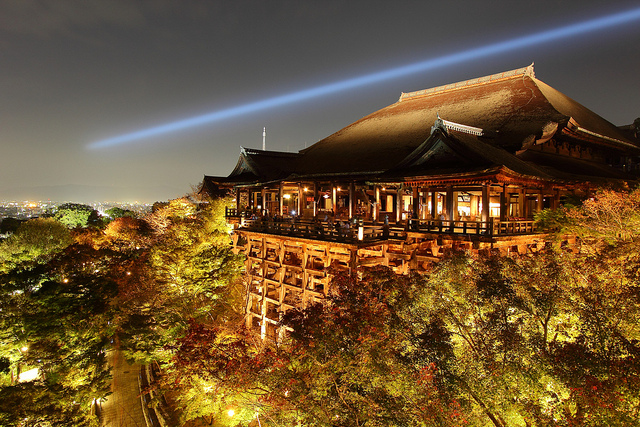
It is said that, in 778, after having an inspired dream that guided him, the monk Enchin arrived at a spring of pure water at the foot of Mt. Otowa, carved a thousand-armed Kannon and prayed. Thereafter, the clear water (“kiyomizu”) flowing down from the mountain came to be considered to have life-extending properties, which led to the establishment of Kiyomizu-dera. The Hondo (main hall) is a national treasure, and the fifteen temple structures are registered as Important Cultural Properties, and there is an eleven-headed Kannon. In 1994, Kiyomizu-dera was listed as a World Cultural Heritage Site.
- Location 294, 1-chome, Higashiyama-ku, Kyoto
- URL http://www.kiyomizudera.or.jp/
Kodai-ji Temple 高台寺
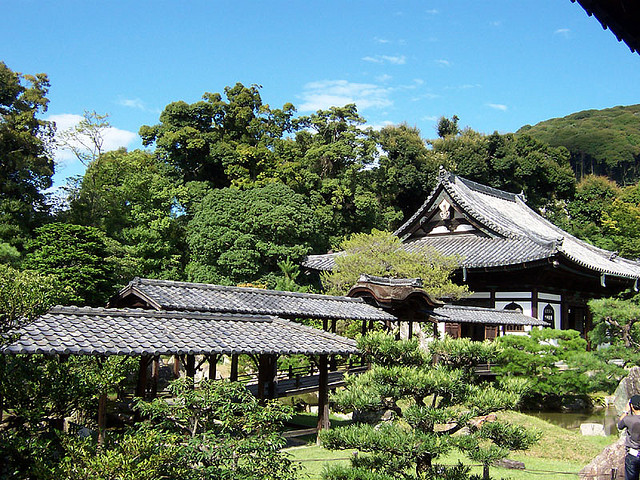
Kodai-ji, formally known as Kodai-Jusei Zen Buddhist temple, was built in 1606 by Toyotomi Nene (1564-1624), the wife of Toyotomi Hideyoshi (1536-98). Most of the structures in the gardens including the Kaizan-do (founder’s hall), Tamaya (mausoleum), Kasatei (tea house), and Kangetsudai (moon-viewing pavilion) are registered as Important Cultural Properties. In addition, there are a Shumidan (dais for a Buddhist image) and Zushi (small shrine) decorated with makie (patterned gold lacquer), which is known as Kodai-ji Makie, a typical art of the Momoyama period.
- Location 526, Shimogawara-machi,Kodaiji-terashita, Higashiyama-ku, Kyoto
- URL http://www.kodaiji.com/
Gion 祗園
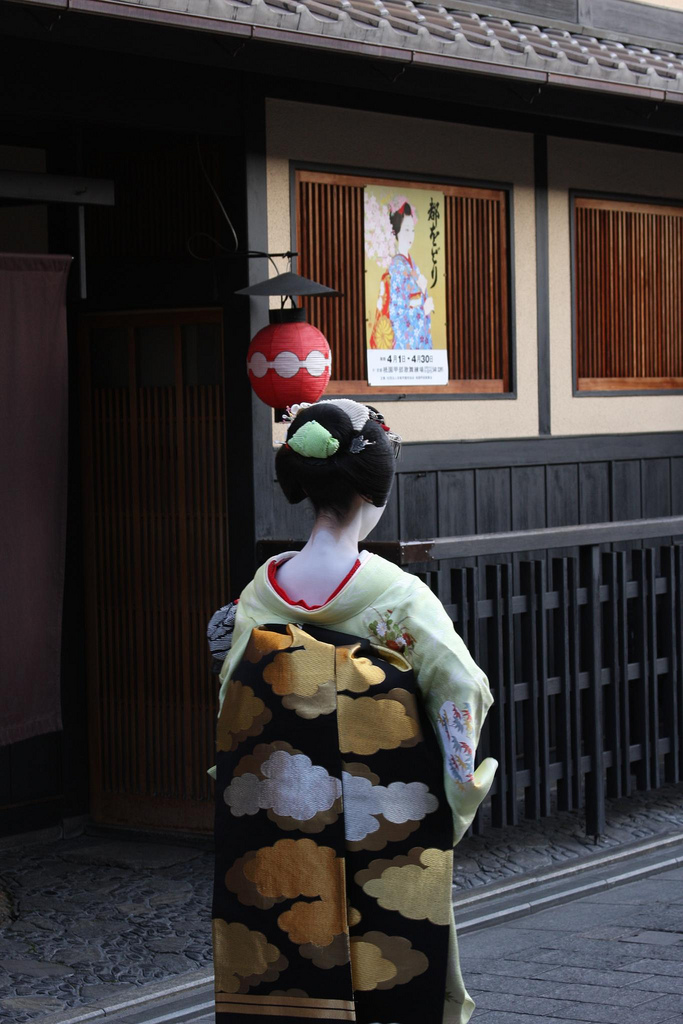
The name “Gion” comes from Gion Kanjin-in, the old name for the Yasaka-jinja Shrine. The history of the area goes back to the early Edo era. Around the area there were a number of tea stalls where beautiful girls served visitors to the Yasaka-jinja Shrine, from which Gion gradually developed into a district serving the needs of travelers and visitors to the shrine. Today it is a bustling amusement and entertainment area with many Japanese restaurants and drinking establishments as well as teahouses. There are also Maiko and Geisha, making it seem like a Hanamachi (“flower town”) from the Edo era.
- Location Gion, Kyoto
Kennin-ji Temple 建仁寺
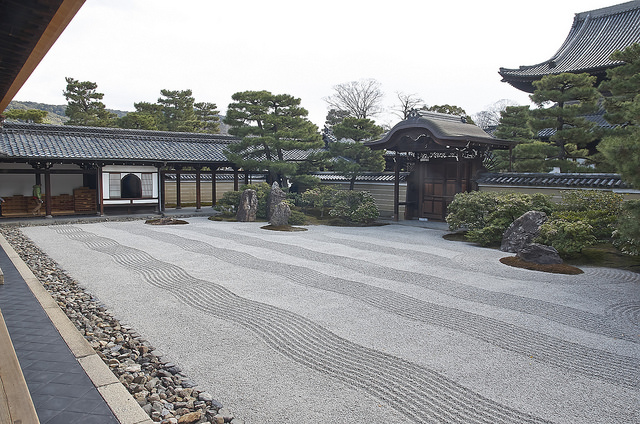
Kennin-ji Temple was founded in 1202. It is a headquarter of the Rinzai sect of Zen Buddhism. It was the third of the Kyoto Gozan, the five most important Zen temples in Kyoto during the Muromachi era. The temple is well-known for its screens with the paintings of the wind and thunder gods, Fujin and Raijin, and the twin dragons painted on the ceiling of the Hatto hall. It is also famous for its Momoyama era gardens. Zen meditation and sermon meetings are held the second Sunday of every month, starting from 8:00 a.m. Everyone is welcome to participate, at no charge. No reservation is required.
- Location Komatsu-cho, Shijo-dori-Kudaru, Yamato-Oji-dori, Higashiyama-ku, Kyoto
- URL http://www.kenninji.jp/
